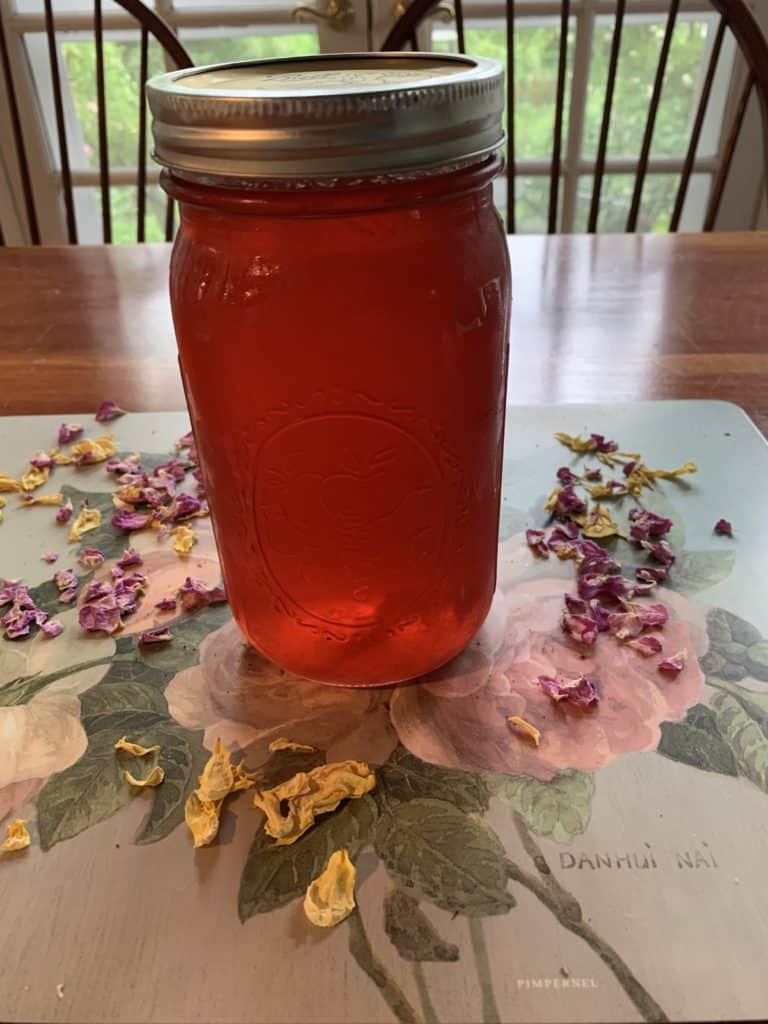Gardening for Health

Gather Ye Rosebuds
By Maria Price
Mid-May to mid-June is rose season. The roses I’m referring to are the old-fashioned, heirloom type of roses that were in existence before 1867. Some of them go back to ancient Roman and Greek days.
Symbolic of beauty, youth, fidelity, friendship, appreciation, congratulations, sympathy, and, yes …. LOVE; the rose seems to express all emotions.
According to the website ediblelandscaping.com, “The rose has always held a prominent place in poetry, literature, tradition, symbolism, art, and world cuisine. It has led man forth in conquest, migration, colonization, war and peace. It has intrigued writers, philosophers, poets and many others who have tried to explain its beauty.” (https://ediblelandscaping.com/careguide/Rose/)
Descriptions over the years have credited the rose with having 20, 30, 60, or over 160 petals, and legends surrounding the rose are as numerous as its ascribed number of petals.
The use of rosewater can also be traced to ancient times. In his Historia Naturalis, around 75 A.D., the Roman naturalist Pliny mentions over 30 remedies using rosewater. Today you can find rosewater in your local pharmacy or cosmetics store as well as Middle Eastern grocery stores. Historical texts reveal that during Medieval times, women sprinkled rose petals among their clothes, bathed in rose petal water, used rose and glycerin for skin care, and ate candied roses.
During World War II, when ships could not deliver citrus fruit to England, it was discovered that roses and rosehips, the fruit of the flower, are very high in vitamin C. The Rosa rugosas form the largest hips. The rose family includes strawberries, raspberries, apples, pears, peaches, and cherries.
Ediblelandscaping.com also states that “Gerard’s Herball from the 1600s tells us the distilled water of roses is good for strengthening of the heart, refreshing the spirits, and likewise for all things that require a gentle cooling.”
The skill of the French in raising and preparing roses is world-renowned. Cleopatra used the rose extensively in Egyptian ceremonials. Saint Dominique paid daily tribute to the Virgin Mary with a bouquet of fresh roses. It is said the rose of Virginia will die if planted elsewhere. Scandinavian countries believe the rose is guarded by elves and trolls.
Trust your nose: the more fragrant the flower, the more flavor you’ll capture when making your own rose concoctions. Roses vary in flavor and the darker ones usually have a stronger taste than the lighter shades. Only use roses that you’ve grown and are not sprayed with pesticides.
Make some rose petal syrup to add to drinks like lemonade, tonic water, and cocktails. To collect petals, grasp the stem in one hand and the flower in the other and pull the petals en masse from the calyx, the outermost whorl of the flower. Fill a quart-sized Mason jar with the rose petals. Cover with boiling water and let infuse for 24 hours. Strain out the petals. To each cup of infusion and the juice of ½ lemon and 2 cups of sugar. Bring to a boil and pour into sterilized containers. Store in the fridge.
